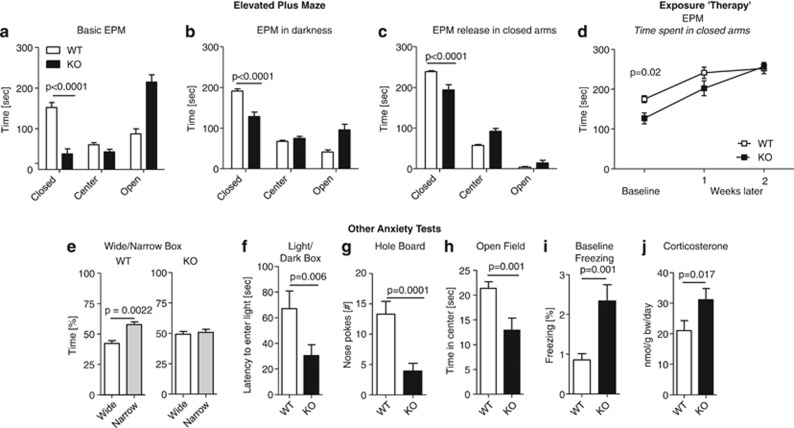Figure 2.
Male Gpm6a mutants show a strong claustrophobia-like phenotype on top of mild anxiety features. (a) Behavior of Gpm6a knockout (KO) and wild-type (WT) littermates in classical elevated plus maze (EPM); (b) in EPM performed in the darkness; and (c) in EPM upon release in closed arms. (d) Weekly exposure to EPM (over 3 weeks) led to reduction of closed arm aversion in Gpm6a KO. This adjustment also explains the weaker closed-arm avoidance seen in mice of b and c, which had had one previous exposure to EPM. (e) In a newly developed wide/narrow box test, WT mice spent more time in the narrow area (left graph), whereas Gpm6a KO did not show narrow space preference. (f) In the light/dark box, Gpm6a KO mice entered the light area faster; (g) explored less holes (requiring nose pokes in narrow holes); (h) spent less time in the center of the open field, and (i) exerted higher baseline freezing in the fear-conditioning chamber. (j) Exposed to narrow metabolic cages for 3 h, Gpm6a KO excreted higher levels of corticosterone via urine. (a–c): N=17–18; (d): N=8; (e): N=32–35; (g–h): N=17–18; (i, j): N=12. Mean±s.e.m. presented.

